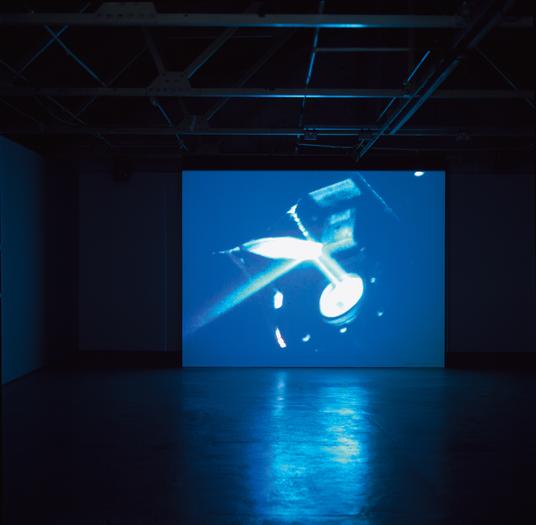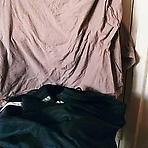Wolfgang Tillmans
Lights (Body) 2000-2002
August 2 – 23, 2002
Main Gallery
Lights (Body), 2000-2002, a video installation by Wolfgang Tillmans, is the first work by the photographer using the medium of film. The subject is the shifting and flashing lights in a nightclub set to a hypnotic dance track. The idea originated from something Tillmans had been thinking about and observing for a number of years but resisted elaborating on because of the deceptively simple nature of the subject. However, the idea kept re-emerging and after six years of debating and evaluating his fascination with these lights and the subtle complexity of the idea, Tillmans finally picked up a camera and started filming in 2000. It was not until last year, that Tillmans became really serious about the project and he finished Lights (Body) in 2002. As Tillmans writes….
This is my first video piece, even though I have been seriously thinking about video since 1993. But I was unclear about using a time–based medium and the role of narration. Personally I am very critical of time-based art: you never know from the outset how long you are in for the ride. Why be confronted with narrative that again forces the viewer to follow a single track? I think the great thing about looking at art is the freedom to move about with your eyes and your thoughts. I think that is why I am happy with this piece; it doesn't really try to tell the viewer anything in terms of a narrative or a message – which does not mean it's weak, or has nothing to say. I appreciate something very simple, and observing the incredible potential in something simple but without preaching.
Lights (Body) is of course very much connected to my earliest works in nightclubs such as dancer OperaHouse, 1989; blood dancer, 1992 and the 1992 Chemistry square series where I was looking at the attraction of the night atmosphere and sweat soaked skin. It is totally abstract and yet it is about all the bodies dancing underneath the lights. I filmed it whilst the club was in full action on Saturday nights. You wouldn't necessarily know that, except that in one of the lights you see flakes of floating dust. Since dust is 90% human skin there is some presence of the body there. Certainly it doesn't have a clinical atmosphere, even if you can't see any people. I experimented with different soundtracks and in the end I chose the ‘Hacker Remix' of ‘Don't be Light' by Air, which sounds like an ongoing opening to a song that never quite kicks in. It's all about the promise of excitement, and it also covers a few recent moments in club music history. It could be early eighties, reminding me of the beat of ‘ Blue Monday' by New Order, 1983, but it also falls into the category of 1990's techno music, like a generic club track. I wanted to keep it open; one viewer can think ‘this is like my days at Studio 54', and somebody else connecting to some neo-electro club in Berlin. Even though my work is connected to the ‘here and now' it's not that specific in terms of trends and fashions. Art should be of its time – you can't avoid that, all the best in art history was of its time and nobody was afraid it would go out of fashion.

